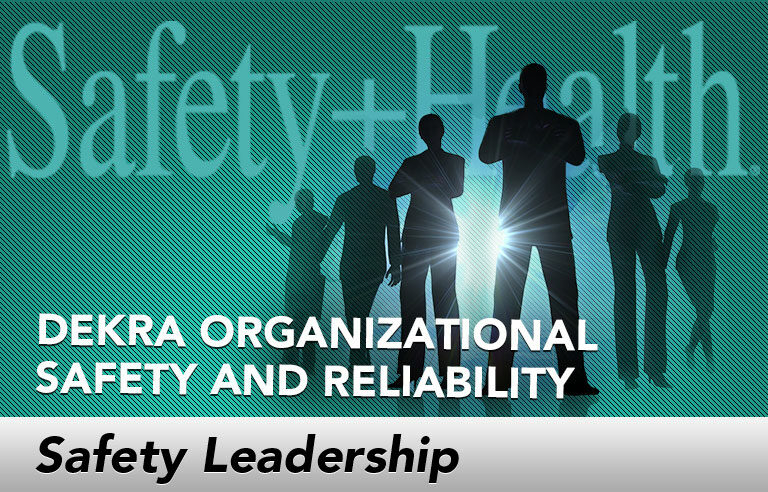Safety Leadership: The secrets to keeping workers safe on short-term projects

Editor’s Note: Achieving and sustaining an injury-free workplace demands strong leadership. In this monthly column, experts from global consulting firm DEKRA Insight share their point of view on what leaders need to know to guide their organizations to safety excellence.
The new year can bring additional short-duration or evolving work projects and, with them, a heap of unique obstacles to safety. Whether it’s a construction site, a turnaround project or a cleanup, many short-term projects involve a lot of different employees with multiple layers of work, innumerable employees in constricted spaces and deadline pressures to navigate. The threat of serious injury and exposure rises rapidly in these situations as we struggle to get all the different players on the same safety page.
In the past, we’ve thrown orientations and additional inspectors at these worksites to try to prevent injuries and fatalities. But experience tells me there may be an even better way to increase the behavioral reliability at these sites.
A few years ago, I was working with an oil refinery company on a big turnaround project. It had thousands of contractors onsite, and I was worried (rightly so) about how the company was going to keep everyone safe. In addition, the company challenged us to match the safety results it was getting at its regular refinery – where processes were controlled and steady – and gave us only two weeks to get the project up and running. Talk about a hard job.
Fortunately, this was a union site, so, in one sense, it made it easier to determine where to go to first. I said, “Let’s talk to the union.” About 15 different unions were working on this job, but in two weeks we turned 200 of their union supervisors into safety intervention experts. We helped them determine the kinds of exposures and hazards to look for at their site, how to collect observation data, and what kinds of safety recommendations that data could generate at the end of every day. We showed them the basics of good coaching and mentoring, too.
The union guys saw this education as a brother-looking-out-for-brother practice, and they took it to heart. Not only was the end result a safe worksite, but when the job was completed, the host company presented the labor unions an award, saying it was the safest turnaround it had ever run.
So, what can we learn from this experience that will help you in your short-term work projects this year?
Identify the biggest risks that drive incidents on the site. Each worksite is different. Each presents its own hazards and challenges. Look at the incident and near-miss history at short-term work projects similar to the one you’re about to embark on. What exposures drove those incidents? What behaviors contributed to them? Make a list of these items and make sure you’re always addressing them.
Educate your workers so they can educate their peers. Peer learning not only prevents safety principles from being just top-down edicts, it also promotes mastery of the subject matter by your workers. The repetition of observing and coaching by the supervisors, in my example, made each of the safety principles we taught them that much more part of the daily routine on the job.
Change the climate first. In short-term work projects, you typically don’t have the luxury of time to make big changes. Time allows cultures to evolve, and cultures ultimately drive long-term safety results. So, your main focus in short-term work projects should be creating the right climate for safety. That means reducing exposures before all else.
In an ideal world, you’d hire a consulting company to walk you through each step of this process in a way that creates a culture. But, as you know, we don’t live in an ideal world. We inhabit one that is always looking to go faster, bigger, better. However, if you understand how to engage the workforce and follow these steps, I think you’ll find you can go faster, bigger, better in your short-term work projects without hurting safety.
This article represents the views of the author and should not be construed as a National Safety Council endorsement.
 Jim Spigener is a chief client officer with DEKRA Insight. Spigener is a highly sought-after speaker who uses his expertise in leadership and safety change initiatives to advise senior leaders around the globe on safety performance.
Jim Spigener is a chief client officer with DEKRA Insight. Spigener is a highly sought-after speaker who uses his expertise in leadership and safety change initiatives to advise senior leaders around the globe on safety performance.
Direct to your inbox: Sign up to be notified in email about new "Safety Leadership" columns.
To display the infographic on your website or blog, copy the embed code below. Paste it into the HTML source view of your page in the position where you want the graphic to appear. It should size itself to fit your content container width.
Post a comment to this article
Safety+Health welcomes comments that promote respectful dialogue. Please stay on topic. Comments that contain personal attacks, profanity or abusive language – or those aggressively promoting products or services – will be removed. We reserve the right to determine which comments violate our comment policy. (Anonymous comments are welcome; merely skip the “name” field in the comment box. An email address is required but will not be included with your comment.)


